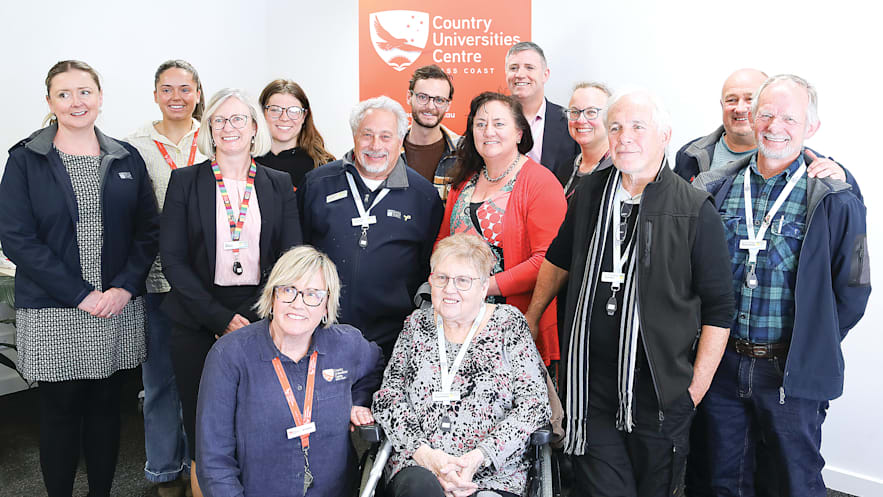BASS Coast Shire Councillors dropped into the Country Universities Centre (CUC) Bass Coast on Wednesday, November 12, and left with a clear message: the campus is quietly changing lives, all while gearing up for its next chapter.
Centre manager Sarah Bourke used the visit to brief councillors on how the Wonthaggi hub is lifting local aspirations and smoothing the path to higher education.
“The work we’re doing in schools is making sure young people know this facility is here,” Ms Bourke said.
“But we wouldn’t be here without the support of Bass Coast Council.”
Housed in a council facility that opened in March 2021 under the Australian Government Department of Education’s Regional University Study Hubs (RUSH) Program, CUC Bass Coast has already supported more than 500 local students to study closer to home. The model is simple and powerful: students enrolled with universities across Australia can access quiet study spaces, dual-screen computers, high-speed tech, academic mentoring and, perhaps most valuably, a community of peers.
Deputy Mayor Brett Tessari, who helped drive the project in its early days, said the hub was born from unfortunate regional realities.
“We’d been trying to get a university, but it just wasn’t viable,” he told the gathering.
“It’s the proudest thing I’ve done in my three terms as councillor – this building right here.”
Cr Tessari recalled the barriers that once pushed local students to cram a week’s worth of classes into a single long day in Melbourne, with risky late-night drives home and high dropout rates to match. The pitch for a purpose-built local study hub, underpinned by government funding, followed.
Today, the numbers tell a story of momentum. There are 208 students currently using the centre, up by 50 compared to this time last year. The growth is undeniable, but it brings a challenge: three-year funding cycles mean resources may not always keep pace with growing demand.
“We can be doing more work and growing, but still working with the same amount of money,” Ms Bourke said.
The visit doubled as a chance to talk jobs. With Bass Coast among Victoria’s fastest-growing coastal regions, the pipeline from study to local employment is front of mind.
“A big part of our strategic vision, as we become a more established higher education centre, is that pathway into graduate employment outcomes,” Ms Bourke said.
“We’ve got the opportunity for local people to remain local and study and build their skills, and the next step is linking them with local employment pathways.”
Healthcare was the headline example. CUC Bass Coast counts nearly 78 nurses studying with a connection to Bass Coast Health, and 37 staff from the health service have graduated since 2021.
“That’s workforce in waiting,” Ms Bourke said, a tangible return for a region that needs nurses and allied health professionals to keep pace with population growth.
Council’s ties to the centre remain strong, with ongoing board representation and alignment to broader goals around participation and a pipeline for future local professionals. Council CEO and CUC Board Director Greg Box has previously framed the hub as essential infrastructure: if you want to “shift the dial on learning”, you start by providing access.
Students say the access is real. In a short film screened during the visit, CUC student Kasey described the practical lift that comes from “a dedicated space for study”, while another student, Grace, spoke about finding community in the otherwise isolating world of remote learning. “CUC has been a game-changer for me,” she said.
“It lets me have a community and an environment to study and be myself.”
The hub’s school outreach is steadily widening too.
“It’s about raising aspirations and getting students thinking about what comes after school earlier,” Ms Bourke said, an approach that sees staff in classrooms demystifying university and showing that a viable path can start a lot closer to home. On Baillieu Street East to be exact.










